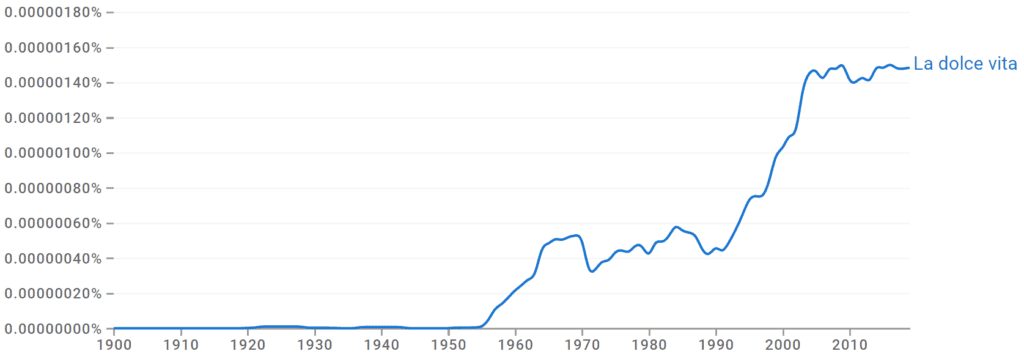The English language borrows many expressions from other languages to add interest and a greater depth of meaning to both speech and written texts. You may recognize the expression La Dolce Vita as the title of a popular 1960s Italian film (if you enjoy the classics). But did you also know you can use the term to describe a life of luxury and enjoyment?
Literally translated as the sweet life, take advantage of this term in your own material by learning how to use it below.
What Is the Meaning of la Dolce Vita?

La dolce vita is a borrowed Italian “loan phrase” first used in English in the 1960s and literally translates as “the sweet life.” It describes a way of life that is easygoing, enjoying things to the fullest or infers a life of pleasure.
Usually, the term la dolce vita involves luxury and pleasure of varying degrees. Sometimes, it is used in a way that is considered hedonistic, shallow and materialistic.
For example:
- After her divorce, Sanna embraced la dolce vita through her travels of the Mediterranean as a newly single woman, sleeping wherever and with whomever she chose.
But more often, it means that life is simply carefree and enjoyable.
For example:
- Enjoy la dolce vita within view of the sandy, pristine beaches and historical sights when you book your luxury tours through our company.
- Everything you could need or want is at your fingertips, including private luxury bathing opportunities and customized excursions, so enjoy la dolce vita on your cruise.
La Dolce Vita Origins

The term la dolce vita is derived from the title of the film of the same name produced by Frederico Fellini in 1960. The movie is an Italian film starring Marcello Mastroianni as a gossip journalist traveling through Rome in his search for love and happiness.
Dolce means sweet, and vita means life, literally translated as sweet life.
Like other popular titles and names, la dolce vita became a catchphrase to indicate a sweet life of pleasure.
Other Fun Facts
It’s no surprise that la dolce vita became a popular term. The movie was widely acclaimed in Europe and overseas, winning the Palme d’Or award at the Cannes Film Festival and an Academy Award for best costumes. It also was nominated for three Oscars and is considered a masterpiece of Italian cinema.
The movie also coined another widely used phrase alongside la dolce vita: paparazzi.
Today, we use the term paparazzi to describe the relentless media photographers that follow well-recognized celebrities and other famous faces.
Fellini was inspired to create a photographer to accompany his journalist character within the plot line. This photographer was named Paparazzo and was modeled after the Italian celebrity-hounding photographer Tazio Secchiaroli. Secchiaroli was known for his questionable ethics when pursuing celebrities, often purposely focusing on and publishing compromising shots of these subjects.
Let’s Review
La dolce vita is an Italian loan phrase made popular due to a 1960s Italian Movie Masterpiece of the same name. Widely acclaimed worldwide, it gained a strong audience in English-speaking countries, turning the title into a phrase to describe a life of pleasure.
Literally translated as the sweet life, la dolce vita is used today to explain a carefree and enjoyable time and occasionally has more hedonistic uses.
